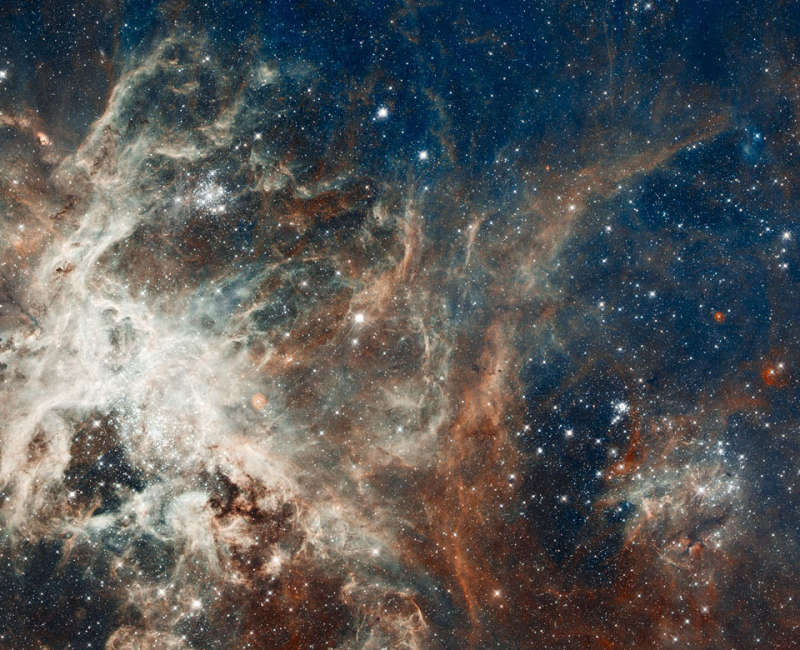Credit & Copyright: NASA,
ESA,
ESO,
D. Lennon
(ESA/STScI)
et al.,
and the Hubble Heritage Team (STScI/AURA)
Explanation:
The largest, most violent star forming region known in the whole
Local Group of galaxies
lies in our neighboring galaxy the
Large Magellanic Cloud (LMC).
Were the Tarantula Nebula at the distance of the
Orion Nebula -- a local star forming region --
it would take up fully half the sky.
Also called
30 Doradus, the red and pink
gas indicates a massive
emission nebula, although
supernova remnants and
dark nebula also exist there.
The bright knot of stars
left of center
is called R136 and contains many of the most
massive, hottest, and brightest stars known.
The
above image is one of the
largest mosaics ever created by
observations of the
Hubble Space Telescope and has
revealed unprecedented details of this enigmatic star forming region.
The image is being released
to celebrate the
22nd anniversary
of Hubble's launch.
Astronomy Seminar of the Week:
The Great Debate, Part I
1999 2000 2001 2002 2003 2004 2005 2006 2007 2008 2009 2010 2011 2012 2013 2014 2015 2016 2017 2018 2019 2020 2021 2022 2023 2024 2025 |
Yanvar' Fevral' Mart Aprel' Mai Iyun' Iyul' Avgust Sentyabr' Oktyabr' Noyabr' Dekabr' |
NASA Web Site Statements, Warnings, and Disclaimers
NASA Official: Jay Norris. Specific rights apply.
A service of: LHEA at NASA / GSFC
& Michigan Tech. U.
|
Publikacii s klyuchevymi slovami:
Tarantula Nebula - star formation - LMC - Tumannost' Tarantul
Publikacii so slovami: Tarantula Nebula - star formation - LMC - Tumannost' Tarantul | |
Sm. takzhe:
Vse publikacii na tu zhe temu >> | |
